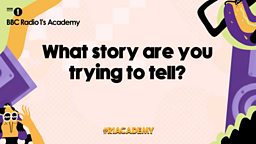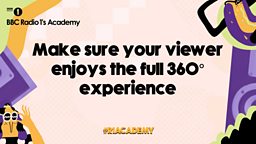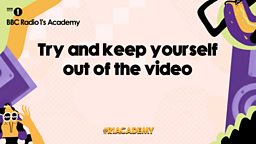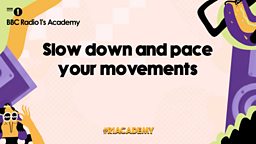What's the secret to making great 360° videos?
There's more to it than just having the right camera...
If you're viewing this page on your mobile or tablet, you might need to head to the YouTube app for the full 360° experience.
360° video has been around a long time, but it's about to become a lot more popular
Big companies like Google, Facebook and Samsung are investing huge amounts of money in virtual reality headsets, which take 360° videos to a whole new level.
With virtual reality you're not watching a video any more - you're right there in the middle of it. We've been trying some out at Radio 1's Academy in Devon and they're unbelievably cool.
So, now that it's going to be big what do we need to know about filming in 360°?
Virtual reality is all about the experience

We've taken the plunge with VR at Radio 1's Academy in Devon.
In other words, there's more to it than just sticking your camera in the middle of the room.
Remember The Voice's virtual audition at the top of the page? This is a great example of 360° video because you get to see and feel exactly what the contestants feel.
The nervous walk backstage, words of encouragement from Marvin and Emma, the excitement of the crowd as you step out onto the stage - it's all there.
You might not be making virtual deep-sea dives with your first attempt, but it needs to be something that your viewers can really engage with.
Witness the awesome power of virtual reality, as this man's granny tries it for the first time. (Warning: This third-party video might contain adverts).
So how do you make things interesting?
We caught up with the team behind The Virtual Voice, who gave us a few top tips on making your own 360° videos:

Is there a particular emotion you're trying to achieve with your virtual reality experience?
The Voice wanted to offer fans the best experience of the show possible, and what could be more realistic than putting you in the shoes of a contestant?
Make sure that you've got a story to interest your viewers - don't just set a camera up and see what happens.

If you're watching TV and something happens off-screen, the camera might move so that you can see what's going on.
With 360° video, the viewer has to do the turning themselves. Use the action on screen to encourage viewers to explore the whole of their surroundings.
Check out how the voice did it at the start of this video:

Try and keep your own movements to a minimum. If you can, edit yourself out once you've shot your video.
You want the person watching to feel like like they're a part of the experience. It's all about them, not the person holding the camera.

To cut a long story short, 360° videos are made up of a few different vids stitched together.
You might find it a bit tricky to edit together if you move too quickly.
You also want to think about giving your viewers time to take everything in. You know what's going to happen because you made the video - someone watching it for the first time won't know what to expect, or where to look.
Ready to make your own 360° vids?
-
![]()
Check out BBC Taster for more inspiration
Discover dinosaurs with David Attenborough, dive down with sea lions and get right up close to the action for Wales vs Scotland in the 6 Nations.
All the BEST Bits from The Academy in Hull
What's New At The Academy?
-
![]()
Fancy a career like Craig David’s?
Craig and his manager Colin share their tips for aspiring musicians.
-
![]()
Get Paid For Your Social Media Skills
Turn your posts into pounds with advice from some of the biggest profiles in the world
-
![]()
Can I Really Get A Job At Radio 1 & 1Xtra?
The answer is YES - just ask our interns!
Advice and Inspiration
Fill Your Brain With Digital Media
-
![]()
How to make your posts pay
Tips from the social media gurus behind huge accounts like Coldplay, Glastonbury and Innocent on how to make properly professional posts
-
![]()
Where To Start In Digital Media
Enter the ever-evolving world of the web...
-
![]()
What's the secret to making great 360° videos?
Virtual reality is becoming more and more popular, so how do you make your videos stand out?
Radio 1's Big Weekend 2017
-
![]()
Full Line Up
It's about to get hot in Hull!
-
![]()
WATCH: Meet the Line Up
See some classic Radio 1 performances from Katy Perry, Kings of Leon, Biffy, Royal Blood and more.
-
![]()
LISTEN: R1BW 2017 Playlist
Treat your ears to the sounds of this year's line-up
-
![]()
Big Weekend 2017: Event Info
You got the tickets. Now get the lowdown about our huge weekend of live music.
-
![]()
Six Things to Do If You Didn't Get A Ticket
If you didn't get a ticket, fear not. You can have in on the action too.














